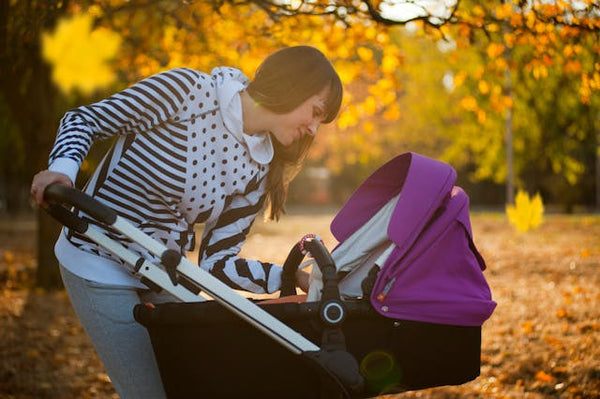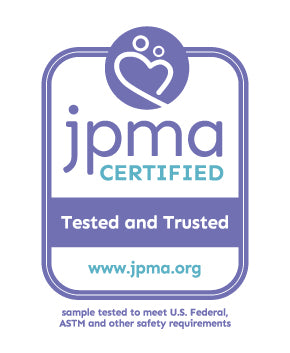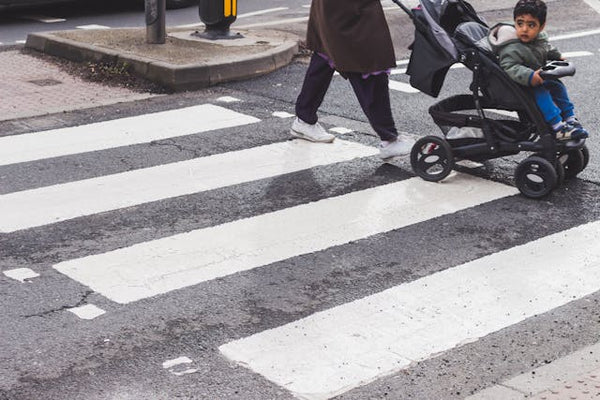Stroller Safety 101: A Complete Overview & Tips You Need to Know

Updated 27 Dec 2024
Parenting is a wonderful, chaotic, joyful, non-stop adventure. One of the most powerful tools you’ll have at your disposal is a trusty stroller. A great stroller not only offers convenience and ease of mobility but also gives parents peace of mind when it comes to their little one’s safety and comfort. That’s why, as parents, we need to be well-informed about the ins and outs of stroller safety standards and practices.
In this guide, ANB Baby walks you through the vital aspects of stroller safety, from understanding certifications and regulations set by authorities to key safety features. We'll explore must-have safety features, share practical tips for maneuvering your stroller securely, and even shed light on important safety certifications and regulations set by authorities. Join us on this journey, where safety takes the lead, making every stroll a secure and delightful experience for both parent and child!
Stroller Safety Certifications and Regulations
JPMA Certification and ASTM Standards for Strollers
To guarantee the highest level of safety, it's essential to be aware of the certifications and regulations that strollers should meet. All strollers sold in the United States must comply with the mandatory federal safety standard 16 CFR 1227, which incorporates the American Society for Testing and Materials (ASTM) F833 stroller safety standard. But to give yourself even more peace of mind, make sure the stroller you choose has a JPMA-Certified sticker. It means that the Juvenile Products Manufacturers Association has certified that the stroller meets the mandatory federal requirements, plus the JPMA’s additional requirements. You can also consult the stroller experts at ANB Baby for more info on how specific strollers perform.

USCPSC Safety Standards for Strollers
The US Consumer Product Safety Commission (CPSC) also outlines specific requirements for strollers, targeting various components and areas to address potential hazards. These include the following:
- Latching and locking mechanisms to prevent unintentional folding or collapse.
- Openings to avoid finger entrapment hazards.
- Frame folding hinges and canopy hinges to address scissoring, shearing, and pinching hazards.
- Exposed coil springs to prevent entrapment hazards.
- Protective components to eliminate sharp edges, points, or entrapment of fingers or toes.
- Toy accessories to address choking hazards.
- Cords and straps to prevent strangulation hazards.
- Parking brake to address fall hazards.
- Static load to prevent tip-overs and collapses.
- Stability requirements to address tip-overs.
- Restraining system to prevent fall hazards.
- Occupant retention for carriages and convertible carriages/strollers to address falls.
- Combination unit of a car seat on a stroller to address falls, tip-overs, and collapses.
- Impact tests to address car seat detachment and ensure product integrity.
- Passive containment/foot opening to address head entrapment.
- Wheel and swivel assemblies to prevent falls and tip-overs.
- Car seat on a stroller or convertible carriage/stroller to address head entrapment.
- No hazardous points or edges.
- No small parts.
- Labeling requirements to address falls and entrapments.
Additional Stroller Safety Standards Under the Consumer Product Safety Improvement Act
In addition to the above, strollers must comply with additional requirements mandated by the Consumer Product Safety Improvement Act. These include:
- Surface Coating Limit: Carriages and strollers must not be painted with paint containing more than 90 ppm (0.009 percent) lead.
- Lead Content Limit: Carriages and strollers must not contain more than 100 ppm (0.01 percent) of total lead content in any accessible component part.
- Phthalate Content Limits: Carriages and strollers with plasticized parts designed for sleep or eating must not exceed 0.1 percent of specified phthalates.
- Testing and Certification: Carriages and strollers must undergo testing by a CPSC-accepted, third-party laboratory. Manufacturers must issue a Children's Product Certificate specifying compliance with safety rules.
- Product and Outer Package Labeling Requirements: Durable infant or toddler products, including carriages and strollers, must have permanent markings with specific information, tracking labels, and additional product markings. A product registration card attached to the product is also required.
By adhering to these comprehensive standards, parents can confidently choose strollers that meet the highest safety benchmarks for their precious little ones.

Key Safety Features to Look For When Choosing a Stroller
When selecting a stroller tailored to your child's needs, consider the following key safety features:
- Age and Size Suitability: Make sure the stroller is designed for your child's age, height, and weight. Newborns, in particular, should have the option to lie almost flat, as they can't support their heads.
- Secure Restraining Belts: Look for strollers with reliable restraining belts. The safest design includes a 5-point harness with shoulder straps, a strap between the legs, and waist belts that connect securely.
- Adjustable Handrest: If the stroller has a handrest at the front, ensure the opening between the grab bar and the seat can be closed when the stroller is in a reclined position.
- Efficient Braking System: Opt for strollers with brakes that lock the back wheels through mechanisms in the wheels themselves. Check for ease of use, regardless of whether it's one-wheel or two-wheel brakes.
- Avoid Pinch Points and Choking Hazards: Ensure the stroller is free from parts that could pinch a child's fingers or pose a choking hazard.
- Stability Check: Assess the stroller for stability, with a wide wheelbase and a low seat in the frame. Confirm resistance to tipping backward when pressing lightly on the handles.
- Well-Positioned Package Basket: If there's a basket, it should be low on the back and in front of the rear wheels for stability and safe storage.
- Leg Openings: Check that leg openings are small enough to prevent infants from slipping through.
- Easy Steering: Ensure you can steer the stroller in a straight line with one hand comfortably.
- Appropriate Handlebar Height: Opt for handlebars at your waist level or slightly lower for ergonomic use.
- Tandem Models for Multiple Children: If you need a stroller for more than one child, consider tandem models for easier steering, stability, and compact folding. If choosing a side-by-side design, ensure there's only one footrest to prevent entrapment hazards.

Tips for Safe Stroller Use
Even with the best stroller, responsible use is essential to keeping your child safe. Consider these tips when it comes to safely using your stroller
- Never leave your child unattended. Always stay close and never leave your child unattended in the stroller.
- Utilize the safety harness. Ensure your child is securely fastened using the stroller's safety harness at all times.
- Avoid using a pillow or blanket as a mattress. Refrain from using a pillow or blanket as a mattress in the stroller. For newborns with excess room, use tightly rolled baby blankets to keep them snug.
- Apply brakes when stationary. Remember to engage the brakes whenever the stroller is not in motion to prevent any accidental movement.
- Avoid hanging bags on handles. Never hang purses or diaper bags on the stroller handles to prevent entanglement hazards and the risk of tipping over.
- Close the grab bar opening in the reclined position. To avoid trapping your baby's head, make sure to close the opening between the grab bar and the seat when using the stroller in the reclined position.
- Fold and unfold away from children. When folding and unfolding the stroller, do so away from children to prevent any risk of pinching their fingers.
- Register your new stroller. If you purchase a new stroller, take a moment to register it with the manufacturer. This ensures they can contact you in case of any safety concerns or recalls.
By following these simple yet crucial tips, you can navigate your stroller with confidence, providing a safe and enjoyable experience for both you and your little one.
The Takeaway on Stroller Safety
When it comes to stroller safety, being well-informed about certifications, regulations, and the right usage is key. By choosing the right stroller, understanding safety features, and following responsible practices, parents can enjoy the convenience of stroller use while ensuring the well-being of their little ones. Remember, safety first – because every stroll should be a joyous and secure adventure for both parent and child.









